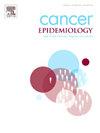新南威尔士州数据关联研究揭示了 HCC 死亡风险的变化:制定更广泛战略的时机已到
IF 2.4
3区 医学
Q3 ONCOLOGY
引用次数: 0
摘要
背景本研究旨在探讨澳大利亚新南威尔士州(NSW)的社会人口和临床因素对肝细胞癌(HCC)死亡率的影响。方法我们利用健康记录和癌症登记数据库的数据链接开展了一项为期 15 年(2001-2015 年)的回顾性研究,以确定所有 HCC 病例并分析 HCC 相关死亡率和全因死亡率。使用地区社会经济指数(SEIFA)确定了基于地点的社会经济地位(SES)。采用多变量 Cox 回归分析确定主要变量对死亡率的影响。在排除关键数据缺失的病例后,对 5454 个病例的研究队列进行了分析。半数以上的慢性肝病病例由非病毒引起。在研究期间,共有4033人死亡,其中2862人与HCC有关。HCC相关死亡病例的中位生存时间为547天,5年生存率为31.3%。与 SEIFA 五分位数 5 相比,SEIFA 五分位数 2、3 和 4 的 HCC 相关死亡率更高(SEIFA 五分位数 1 最不利,SEIFA 五分位数 5 最有利)。此外,年龄≥65 岁、男性、澳大利亚出生、因酗酒并发症住院、诊断时为转移性 HCC 以及未接受 HCC 手术治疗的人群的 HCC 相关死亡率也明显增加。结论在澳大利亚新南威尔士州,非病毒相关 HCC 的发病率高于病毒相关 HCC,与最高社会经济地位相比,澳大利亚出生和较低至较高社会经济地位人群的 HCC 相关死亡风险最大。找出导致这些新出现的差异的因素对于制定有效的预防计划以及分配研究和卫生资源至关重要。本文章由计算机程序翻译,如有差异,请以英文原文为准。
New South Wales data linkage study reveals a shift in HCC mortality risk: Time for broader strategies
Background
This study aims to examine the impact of sociodemographic and clinical factors on hepatocellular carcinoma (HCC) mortality in New South Wales (NSW), Australia.
Methods
We conducted a 15-year retrospective study (2001–2015) using data linkage of health records and cancer registry databases, to identify all HCC cases and analyse HCC-related and all-cause mortality rates. Location-based socioeconomic status (SES) was determined using the Socioeconomic Indexes for Areas (SEIFA). Multivariable Cox regression analysis was used to determine the effect of key variables on mortality.
Results
5564 cases of HCC were diagnosed during the study period. A study cohort of 5454 cases was analysed after excluding cases with key missing data. More than half of the chronic liver disease cases were due to non-viral causes. During the study period, 4033 deaths occurred, of which 2862 were HCC-related. The median survival time for HCC-related deaths was 547 days, and the 5-year survival rate was 31.3 %. Higher HCC-related mortality rates were observed in SEIFA quintiles 2, 3 and 4, when compared to 5 (where SEIFA 1 is most disadvantaged, and SEIFA 5 is most advantaged). Furthermore, significantly increased HCC-related mortality was observed for those aged ≥65, male gender, Australian-born, hospitalisation due to complications of alcohol use, having metastatic HCC at diagnosis, and not receiving surgery for HCC.
Conclusions
There is higher prevalence of non-viral-related HCC than viral-related HCC in NSW, Australia, where HCC-related mortality risk is greatest among those Australian-born and lower to higher SES, when compared to highest SES. Identifying factors contributing to these emerging disparities is crucial for developing effective prevention programs and allocating research and health resources.
求助全文
通过发布文献求助,成功后即可免费获取论文全文。
去求助
来源期刊

Cancer Epidemiology
医学-肿瘤学
CiteScore
4.50
自引率
3.80%
发文量
200
审稿时长
39 days
期刊介绍:
Cancer Epidemiology is dedicated to increasing understanding about cancer causes, prevention and control. The scope of the journal embraces all aspects of cancer epidemiology including:
• Descriptive epidemiology
• Studies of risk factors for disease initiation, development and prognosis
• Screening and early detection
• Prevention and control
• Methodological issues
The journal publishes original research articles (full length and short reports), systematic reviews and meta-analyses, editorials, commentaries and letters to the editor commenting on previously published research.
 求助内容:
求助内容: 应助结果提醒方式:
应助结果提醒方式:


